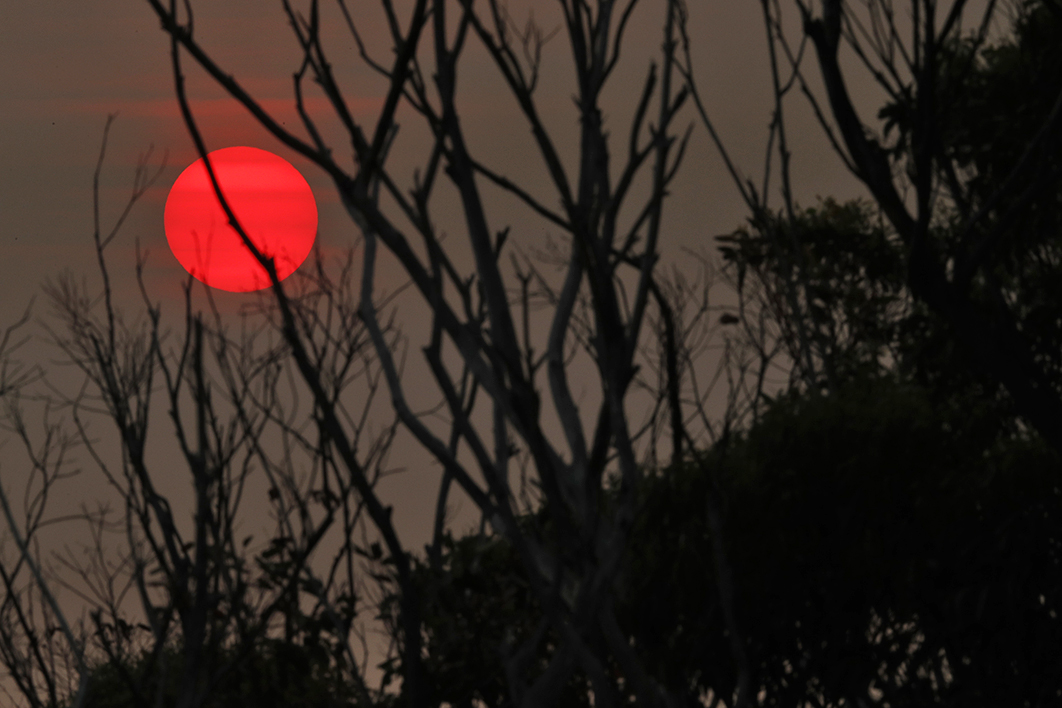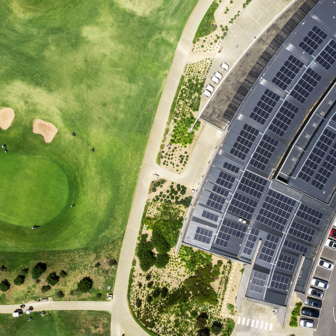As fires engulf us in this terrifying summer, some politicians and commentators are still ducking and weaving around the link between extreme weather events and climate change. One of their arguments is that we’ve always had bushfires in Australia — and it’s true, we have. Bushfire is integral to our ecology, culture and identity; it is scripted into the deep biological and human history of the fire continent. But bushfire is various, and it not only has a history but also a frightening future. The long, gruelling fire season of 2019–20 is something new in modern Australian experience, something we can indeed call unprecedented, and it is a product of climate change.
I don’t use that term “unprecedented” lightly. In 2009 I resisted its use to describe the Black Saturday firestorm, for that fire had the features of a phenomenon Victorians knew all too well. Black Saturday was the latest in a lineage of frightening, fatal firestorms that have roared out of “the fire flume,” as historian Stephen Pyne calls the hot northerly winds that sweep scorching air from inland Australia into the forested ranges of Victoria, South Australia and Tasmania. In that region, bushfires strike every year, firestorms every few decades. Firestorms are bushfires of a different order of magnitude; they cannot be fought; they rampage and kill. The years of the great Victorian firestorms are burnt into the memories of bush dwellers: 1851, 1898, 1919, 1926, 1932, 1939, 1962, 1983 and 2009. These dates with their death tolls are the signature of a distinctively deadly fire region, produced by a cocktail of weather, topography and trees.
The firestorms are intensified by particular species of trees — the mountain ash and the alpine ash — that conspire to create a raging crown fire that kills and reproduces the whole forest en masse and takes people with it. These tall ash-type eucalypts need a hot, fast-moving crown fire to crack open their seeds, upon which their regeneration uniquely depends. Firestorms in these normally wet mountain forests erupt only after long droughts and they concentrate whole summers of fire and anxiety into single, violent events. The ecology of the forest depends on firestorms, so we know they happened also under Aboriginal ecological management. In the last two hundred years, the cultural history of the forest has exaggerated and intensified this natural rhythm.
In 2009 it was the familiarity of the Black Saturday firestorm that horrified me. The event was clearly exacerbated by climate change, but the recurrent realities were more haunting. As I wrote at the time, “the 2009 bushfires were 1939 all over again, laced with 1983. The same images, the same stories, the same words and phrases, and the same frightening and awesome natural force that we find so hard to remember and perhaps unconsciously strive to forget.” As a historian of the fire flume, I was disturbed by Black Saturday’s revelation that we had still not come to terms with what we had already experienced.
The long fire season of 2019–20 is continental in scale and has a whole new character. In an article for the Australian on 4 January, Gerard Henderson used the history of the Victorian firestorm to dismiss claims of novelty for this season’s fires. We have to be much more discriminating than this. One cannot talk about fire without being deeply attentive to locality, ecology and history. It is dangerous to generalise across ecosystems and fire regimes, as Victorians found on Black Saturday. There were so many deaths at home that day because people living in a distinctively deadly fire region had been reassured with a national survival strategy: that staying and defending was a genuine option in those extreme conditions. Such advice may have worked in many woodland areas, but it was a death sentence in the firestorm capital. It is essential for our survival and our culture that Australians learn a fine-grained, local language of fire, such as Aboriginal Australians developed over millennia.
The arrival of Europeans on the continent from the end of the eighteenth century catapulted the country into a spiralling, accelerating fireball of change. Global warming is the latest force to transform Australian nature, following continental drift, the ice ages, the firestick, cultivation, pastoralism, clearing, industrial agriculture and urbanisation. Human-caused climate change is transforming our continent before our eyes, in our own lifetimes. Droughts are becoming more frequent and severe, rainfall patterns are changing permanently, water is being trucked to inland towns, species are being pushed to extinction, and forests that evolved to burn are experiencing fire of different intensity and frequency such that some are no longer forests.
This summer, coming after severe drought and more record heatwaves, has tipped fire patterns into widespread rogue behaviour. It’s not unusual for Australians to have smoke in their eyes and lungs over summer — the great fires of 1851, 1898, 1926, 1939 and 1983 are remembered also for their weeks of smoke and for the black leaves of warning on lawns and in swimming pools. In the 1920s and 30s, bush workers on the watch for fire learned to identify fresh smoke in the acrid forest air. In 2002–03, the alps burned for months before culminating in their sudden defining invasion of Canberra on 18 January.
There is much that we are experiencing today that we can find also in patterns of the past. But the smoke is worse, more widespread and more enduring, the fires are more extensive and also more intense, NSW fires are behaving more like Victorian ones and some Victorian fires are more like those north of the border, and the “Border Fire” symbolically erased the boundary anyway. Australia has been burning since August, from Queensland to Western Australia to Kangaroo Island to Tasmania, from the Adelaide Hills to East Gippsland, in the Great Western Woodlands and up and down the eastern seaboard. And the Victorian fire season, where most lives are generally lost, is only just beginning.
Victorians always give their firestorms names, generally after the day of the week they struck. There are enough “Black” days in modern Australian history to fill up a week several times over — Black Sundays, Mondays, Tuesdays, Thursdays, Fridays and Saturdays — and a Red Tuesday too, plus the grim irony of an Ash Wednesday. The blackness of the day evokes mourning, grief and the funereal silence of the forests after a firestorm. This summer will leave a black legacy, but there is no single, culminating event and no end to anxiety and fear, no defining day and no day-after yet. Individual Black Days have fused in a Savage Summer. •




